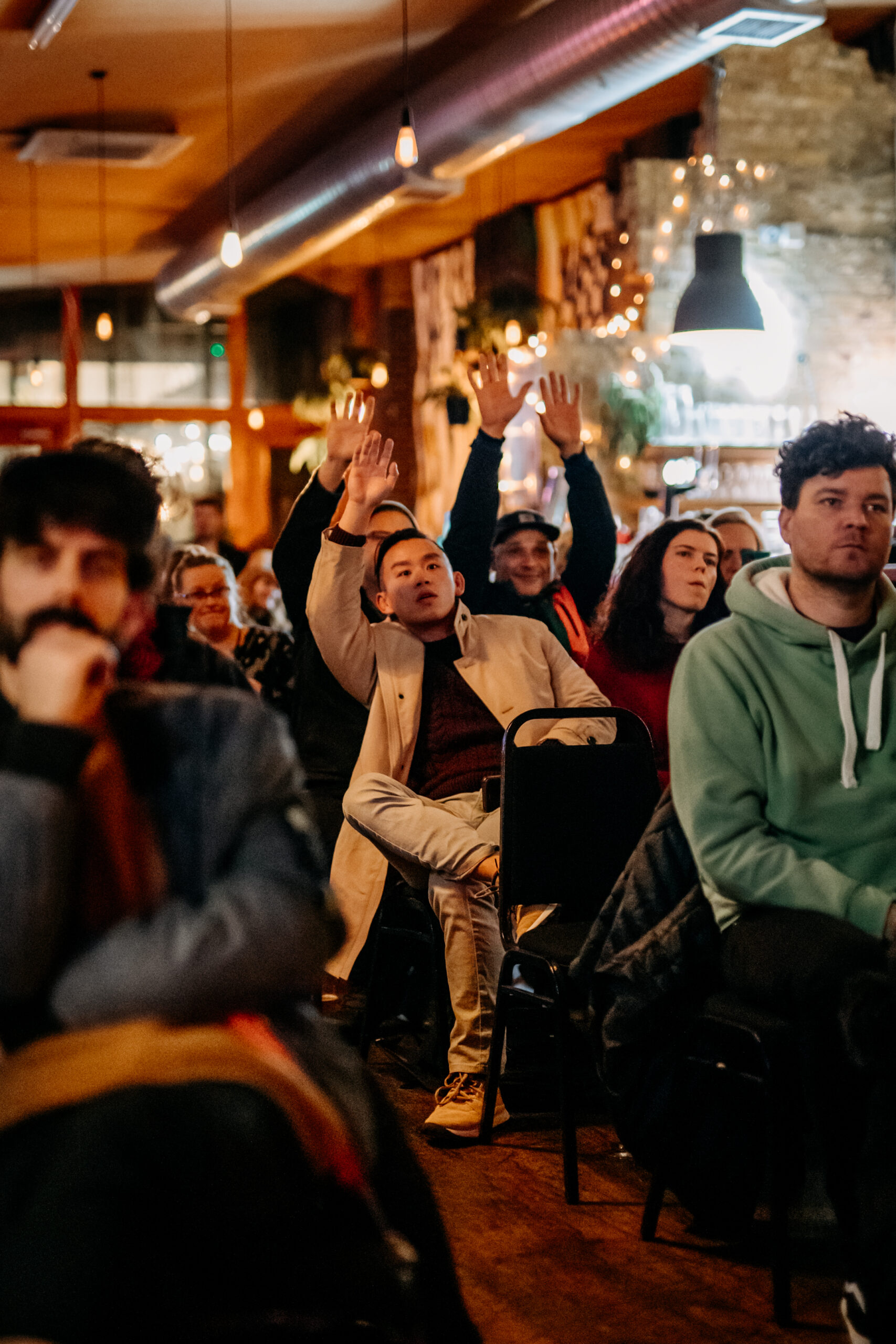Katie McPhee is a marketing leader with over 12 years of experience across the events industry. She is passionate about accelerating growth by shifting perceptions and in part two of this series you can learn how to use the power of psychology to position your event for success.
Behavioural science seeks to understand how people behave – including decision making processes; memory; and emotions – and identifies cognitive biases – or mental shortcuts – which our brains make to simplify the world around us. Within behavioural science, behavioural economics is a more refined set of principles which refer more specifically to people’s economic decision making. Also within behavioural science is the study of behaviour change, consisting of frameworks and interventions to deliver the desired behaviour.
Examples of all these disciplines can be seen across our everyday lives – from city planning, to public health interventions – to product design, advertising and marketing – and whether we realise it or not, they heavily influence how we think and act. In this series you can learn how to harness behavioural science as you build your community and deliver events. From event concept to promotion strategy, targeted nudges can change how your audience behaves, helping you to build community and sell more tickets.
How to Position Your Event for Success
Making your event stand out from the crowd is no easy feat. You can use behavioral insights to better inform your strategies and ensure you can connect with the right target audience. Learn how to make decisions on marketing strategy and how to communicate the right message for your event.
1. The decision process model
Also known as the Engel-Kollat-Blackwell (EKB) theory, this model sets out a four stage process about how consumers make buying decisions. The stages consist of 1) information input, where customers get information from marketing and non-marketing sources; 2) information processing, which details the consumer’s exposure, attention and retention of the message. 3) The decision process stage itself, consisting of five sub-stages – problem recognition; search; alternative evaluation; choice, and outcomes; and 4) Variables influencing the decision making process, which consists of individual and environmental influences that can affect all five stages of the process, such as motives; values; lifestyle; social influences; culture – as well as situational factors like location and finances.
Concept to action
When formulating a marketing plan, the decision process model can inform event creators about the types of content to feature at what stage. If your event type is new and innovative, greater context may be required in the minds of your potential attendees about the purpose of your event and the benefits they can expect to gain. If it’s in an established category, you may expect attendees to also consider alternative events, in which case distinguishing your offering from others is important (see also, ‘The isolation effect’). External variables impacting the decision making process should also inform your promotion strategy. Seasonality is a major factor in events – Christmas and summer can be tricky times to drive ticket sales when people are often busy or on vacation. Event creators also regularly see sales dwindle towards the end of the month, then pick up after pay day.
William, founder of Seed Talks, says: “We keep a keen eye on the data at every step of the customer journey to ensure each part of the process is optimised. We’ve run 100’s of events so have a lot of data points and have formed benchmarks we need to hit. If we aren’t meeting those we go back to the drawing board to try to improve.”

2. The salience bias
Our tendency to focus on items that are more noteworthy while ignoring those that are less attention grabbing is known as the salience bias. The differences could be visual – e.g. colour, size, shape – audible, such as a car alarm on a quiet day – or visceral, the emotional response a situation evokes. While the ability to quickly discern what is important and deserving of our attention is an important survival mechanism, our tendency to focus on the most prominent and striking details lead us to ignore potentially vital information. Our personal interests also impact what we find salient. Someone who works in music is more likely to notice music oriented details than someone whose interests lie in technology.
Concept to action
Having an in-depth knowledge of your target attendee will help shape your event marketing to leverage this principle. Based upon these insights, being intentional when creating both your theme and marketing assets – and using keywords and language associated with your target theme – will enable your event to stand out.
William, founder of Seed Talks, says: “We use bold, colourful & simple marketing images which communicate the essence of the event in the blink of an eye. In today’s social media driven, low attention span world, we only have a few seconds to pique someone’s interest. Offering VIP front row tickets if people want to spend a little bit more to have a better view is another aspect of differentiation across both our promotion and event experience.”
3. Optimism bias
The optimism bias is another cognitive bias, which refers to our tendency to overestimate our likelihood of experiencing positive events and underestimate the chances of negative ones. Mood, motivations, cognitive mechanisms and beliefs can all determine an individual’s optimism bias in any given situation. Studies have found that entrepreneurs are more likely to exhibit above average optimism, overestimating the chances of business success. But there is also evidence that the uncertain process of launching a business – together with time constraints and scarce information, leading entrepreneurs to rely on intuitive thinking and optimism – all act to increase optimism, so that once they launch a business, entrepreneurs are likely to become even more optimistic than before.
Concept to action
Ambitious, entrepreneurial and pioneers of fresh ideas, event creators are more likely to tend towards optimism than those in other fields.
William from Seed Talks believes positivity coupled with ambition has led to the rapid scaling of his event brand and has enabled himself and his team to overcome challenges along the way.
“I always believed our events will resonate well with our audience and be well attended. It’s allowed us to scale across 30 towns and cities in the UK in less than 18 months. If problems do occur I believe in our team’s ability to come up with solutions and overcome them. Inevitably things don’t always go the way you want but the wins will still outnumber the losses if you keen an open mind to problem solving and a positive attitude.
We had trialled some virtual events last year which didn’t go so well for a variety of reasons. To overcome this we decided to try some hybrid events at one of our London venues. Will, our ops manager, has now developed a great system for us to deliver hybrid events at any venue in London and we may roll this out in other cities across the UK too. It allows us to boost ticket sales without having to book a busy speaker in for two dates and launch two separate marketing campaigns, so it’s a positive for everyone involved. I was really unsure if it would be a success beforehand but we trialed it, it worked and now it’s a big part of our events.”

4. Incentives
Incentives are fundamentally linked to motivation: by boosting people’s motivation, incentives have the capacity to change people’s behaviour. People are motivated by different things – so incentives boost motivation only when what is being offered is viewed as valuable to that individual. Extrinsic motivation details when we are motivated to take part in an activity for an external reward, such as financial compensation. Intrinsic motivation describes an activity that delivers a feelgood reward – such as volunteer work, which generates feelings of good will. Yet research has found that while extrinsic motivation might lead to behaviour change in the short term, it won’t have a lasting effect after the intervention ends. Intrinsic motivation on the other hand, can successfully enable behaviour change in the long term.
Concept to action
Beyond the financial incentives, how can you frame the additional benefits of attending your event to motivate potential event goers? Wine education event creators, Wineknow, set out the benefits for their event attendees in terms of capability, such as increased confidence when handed a wine list.
Sarah from the event says,
“We created Wineknow to appeal to those who might be put off by the formality of a traditional wine event. By setting out the capabilities they can expect to gain from the event we have been happy to see the event has attracted people genuinely excited to learn more about wine. We also donate all profits to charity which creates an additional feelgood factor for our community.”
The ways your community engages with your offering and makes buying decisions centres around a set of behavioural patterns, some of which have been described here. Leveraging these as you plan your next event will help you build your community and present your concept and pricing in ways that are likely to strengthen your appeal and build your event brand. Missed part 1 of this series? Recap the exclusive tips to build your community and sell more tickets.
Feeling inspired and ready to put these concepts into action? Start planning and organising your next event with Eventbrite.





